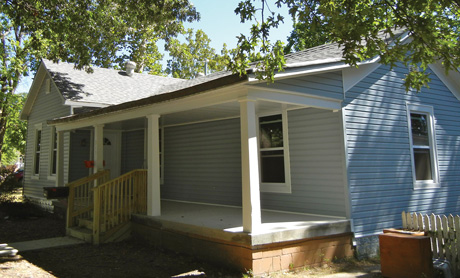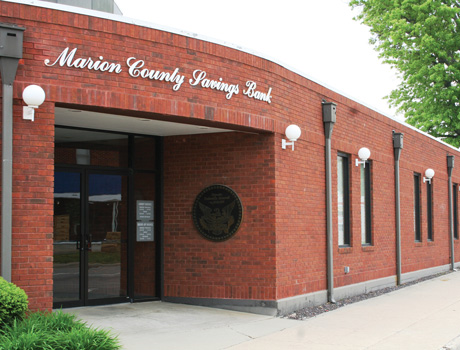Collaboration Is Key in South Central Illinois Community
Like many other Midwest communities, the once-thriving railroad and mining town of Centralia in Marion County, Ill., has seen its population decline along with personal wealth. However, Allison Austin, Centralia's director of community development and planning, and Jeanne Gustafson, director of economic development, have honed their skills at leveraging resources for the betterment of the community. "We owe much of our success to the local banks and JMW CDC," said Gustafson. "It would be impossible to even think about some of the projects that we've been able to work through without them."
Formed in the 1990s by seven financial institutions, Jefferson Marion Washington Community Development Corporation (JMW CDC) is a multi-bank CDC that provides financing in a three-county area. Transactions to be financed typically are identified and brought to JMW CDC by its member banks. That was the case with US SONET. Larry Clark, president of Marion County Savings Bank, explained, "I'm very proud of the work that we did with US SONET on a project that created fiber-optic infrastructure in the city. When we became aware that Salem [located in Marion County] was going to lose some manufacturing jobs because high-speed internet was not available, we financed the project. Not only did it save existing jobs, it created new ones and helped families, schools and businesses."
Another example of collaboration in this small community involved the renovation of 50 houses in a five-block area. Funds from the city, county and state were leveraged with the expertise and resources from B.C.M.W. Community Services (the local community action agency) and many volunteers. "We were able to identify a site on Hickory Street that met the requirements to obtain a Community Development Assistance Program (CDAP) grant from the state," said Austin. CDAP grants provide financial assistance to Illinois communities for a variety of projects, including owner-occupied housing rehabilitation in low- to moderate-income areas.
"After we completed the assessment process and met with residents to get their input, we knew that we would not have enough money to help everyone. So, we reached out to possible partners. B.C.M.W. was a perfect fit since they provide weatherization assistance," said Austin. "B.C.M.W. was already working with many of the residents that we were targeting and was able to provide additional assistance that we could not."
Utilizing the expertise of both the city and B.C.M.W., the project became a reality; renovation and weatherization projects were under way on Hickory Street. "Once we got started, it was amazing to see how involved the homeowners and their neighbors were in the project," said Austin. "We also had many people volunteer to help, including Group Workcamps, a mission project for 12- to 18-year-olds. (See sidebar below.) Last summer, we hosted 465 teens from all over the country. While they can't do heavy construction or put on a new roof, they can paint, build porches and ramps, clean up yards, and landscape. Their help was invaluable, and we are lucky to have another camp group returning next year."

Centralia has renovated 50 houses in a five-block area with a CDAP grant from the state.
One of the real results of the program is seeing pride return to the neighborhood. "You can't help but feel great when you see people living in better conditions," said Gustafson. "It inspires you to do more."
Small-Dollar Loan Program Fills Financing Gap for Marion County Residents
Another collaborator in this community is Marian County Savings Bank, which is doing more through its small-dollar loan program. The bank believes it's good for its customers and for the bank. "Today we loan folks $1,000 for a new washer and dryer. Next year they come back for a car loan. And when they are ready, they apply for a home loan," said Clark.

Marion County Savings Bank makes profitable, small-dollar loans to local residents.
The small-dollar loans average $500 to $2,500 and carry interest rates from 8 percent to 10 percent. Customers pay a $55 loan-processing fee. Lending decisions are made based on the individual borrower and not just their credit score. "Our delinquency rate is a bit higher than our peers, but our loss rate is lower because we know our customers and are willing to work with them when they have financial problems. We manage the risk," said Clark.
To assist customers who have problems meeting their repayment obligations, the bank has a full-time loan counselor who helps find solutions to specific financial situations. "If we know that a customer has had health problems or was laid off from their job, we try hard to find a way to help them. It does not always work, but we try our best to find a good solution that works for everyone," Clark explained.
In these uncertain times, the residents and business leaders of Marion County continue to work together to develop and implement a shared vision of a better future.
Related Topics
Bridges is a regular review of regional community and economic development issues. Views expressed are not necessarily those of the St. Louis Fed or Federal Reserve System.
Email Us
All other community development questions


